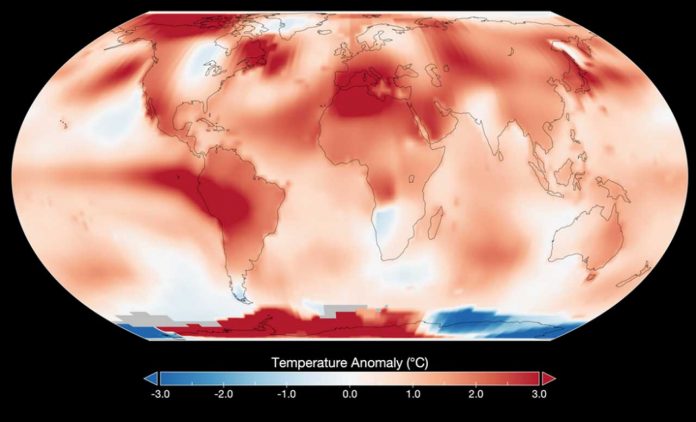
Amidst wildfires, floods, and other natural catastrophes, new NASA data accentuates the urgency of a robust climate response.
Biden’s Climate Leadership in Context
With July 2023 ranking as the hottest month ever documented, the urgency of President Biden’s climate initiative is thrown into sharper relief. “From the moment he took office, President Biden recognized the climate crisis as the defining challenge of our era,” stated Ali Zaidi, White House National Climate Advisor. Highlighting the climate catastrophes afflicting the planet, Zaidi hailed Biden’s unparalleled commitment, from monumental climate investments to fortifying climate resilience across the nation.
The Hard Data
This past July, the mercury shot up, registering temperatures 0.43°F (0.24°C) hotter than any preceding July in NASA’s annals, and an alarming 2.1°F (1.18 °C) above the average July temperature recorded from 1951 to 1980. NASA’s GISS primarily zooms in on long-term temperature fluctuations spanning decades, using fixed base periods to ensure consistent anomaly readings. Temperature “normals” are drawn from extensive periods, often spanning 30 years.
NASA Administrator Bill Nelson stressed, “The repercussions of the climate crisis are palpable across the country. July 2023’s unprecedented temperatures, as substantiated by NASA, accentuate the pressing nature of President Biden’s historic climate actions.”
Regions Facing the Heat
Regions including parts of South America, North Africa, North America, and the Antarctic Peninsula bore the brunt of the heat, with temperature surges around 7.2 °F (4 °C) above the norm. This summer’s excruciating heat exposed millions to heat advisories, leading to numerous heat-induced health issues and fatalities. The record-shattering temperatures of July follow a disturbing trend of anthropogenic warming, predominantly due to greenhouse gas emissions. A testament to this trend: the last five years have witnessed the hottest Julys since 1880.
NASA’s Observations and Insights
“Climate change doesn’t just influence temperatures – it has far-reaching impacts on people and ecosystems globally,” says Katherine Calvin, a chief scientist at NASA. She underscored NASA’s commitment to monitoring climate change and its multiple facets and vowed to keep the populace informed for future planning.
Drawing from myriad meteorological stations and sea temperature data from ships and buoys, NASA derives its temperature readings. The resulting raw data is then processed, taking into account factors like global temperature station distribution and potential urban heat biases.
Unprecedented Warming Trends
Highlighting the gravity of the situation, GISS Director Gavin Schmidt said, “July wasn’t merely warmer than preceding Julys; it was the hottest month since records began in 1880.” Schmidt expressed grave concern about the global warming predominantly driven by human activities, emphasizing its perilous consequences.
Warm sea surface temperatures also played a role in July’s record-setting heat. With the eastern tropical Pacific showing signs of a developing El Niño since May 2023, these phenomena can slightly influence global temperature shifts from year to year. However, the real impact of the ongoing El Niño is projected to be most apparent in early 2024.
As the data rolls in and the impacts of climate change become impossible to ignore, the message is clear: Immediate, large-scale action is the need of the hour.






